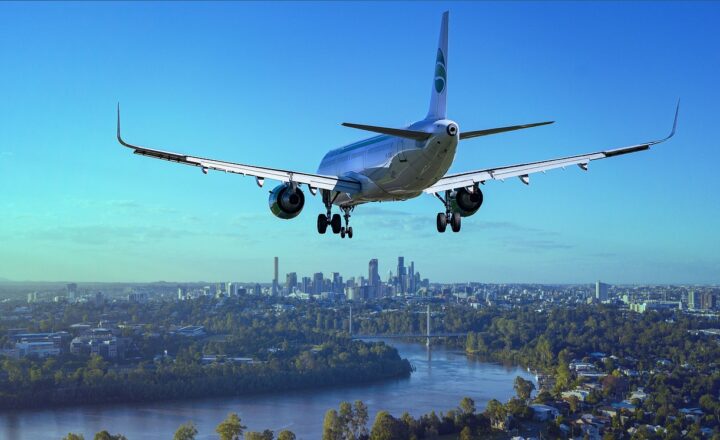
On December 17, 1903, Orville and Wilbur Wright achieved the first powered, controlled, and sustained human flight near Kitty Hawk, North Carolina. This monumental event marked the birth of modern aviation and changed the course of transportation and warfare. This article delves into the lives of the Wright brothers, the challenges they overcame, and the lasting impact of their groundbreaking achievement.
The Wright Brothers: Early Life
Family Background
- Wilbur Wright (1867-1912): Born in Millville, Indiana.
- Orville Wright (1871-1948): Born in Dayton, Ohio.
- Parental Influence: Their father, Milton Wright, was a bishop, and their mother, Susan Koerner Wright, encouraged their curiosity and mechanical skills.
Entrepreneurial Spirit
- Bicycle Business: In 1892, they opened the Wright Cycle Company in Dayton, Ohio.
- Mechanical Expertise: Repairing and designing bicycles honed their engineering skills.
Inspiration and Pursuit of Flight
Early Fascination
- Toy Helicopter: A childhood toy sparked their interest in flight.
- Influence of Otto Lilienthal: German glider pioneer whose work inspired them to pursue aviation.
Research and Experimentation
- Glider Tests: Conducted extensive glider flights between 1900 and 1902.
- Wind Tunnel Experiments: Built their own wind tunnel to test wing designs and improve aerodynamics.
Overcoming Challenges
Aerodynamic Control
- Wing-Warping Technique: Innovated a method to control the aircraft’s roll.
- Three-Axis Control System: Developed controls for pitch, roll, and yaw, essential for stable flight.
Propulsion and Power
- Engine Development: Designed a lightweight gasoline engine with their mechanic, Charlie Taylor.
- Propeller Design: Created efficient propellers based on advanced mathematical calculations.
The First Successful Flight
Preparations at Kitty Hawk
- Site Selection: Chose Kitty Hawk for its steady winds and soft sands.
- Testing Phases: Conducted multiple trials to refine their design.
December 17, 1903
- First Flight: Orville piloted the Flyer I for 12 seconds over 120 feet.
- Subsequent Flights: Completed four flights that day, with the longest lasting 59 seconds over 852 feet.
- Witnesses: Five local observers confirmed the historic achievement.
Immediate Aftermath and Recognition
Patent and Legal Battles
- Securing a Patent: Obtained a patent in 1906 for their control system.
- Litigation: Engaged in lawsuits to protect their invention from imitators.
Public Demonstrations
- Reluctance to Share: Initially secretive to protect their invention.
- European Tours: Demonstrated flights in France and Italy in 1908-1909, gaining international acclaim.
Military Applications
- U.S. Army Contract: Sold the first military aircraft to the U.S. Army Signal Corps in 1909.
- Advancements in Warfare: Paved the way for aerial reconnaissance and combat.
Impact on Aviation and Society
Technological Advancements
- Foundation for Aeronautics: Their principles of flight remain fundamental in aviation engineering.
- Inspiration for Innovation: Motivated others like Glenn Curtiss and Louis Blériot to advance aircraft design.
Economic Growth
- Aviation Industry: Led to the development of commercial airlines and air travel.
- Job Creation: Generated new professions in piloting, engineering, and maintenance.
Cultural Shifts
- Shrinking the World: Made global travel faster and more accessible.
- Exploration and Connectivity: Facilitated international relations and cultural exchange.
Legacy and Honors
Museums and Memorials
- Wright Brothers National Memorial: Located in Kill Devil Hills, North Carolina.
- Smithsonian Institution: Houses the original 1903 Wright Flyer.
Awards and Recognition
- Congressional Medal: Awarded the Congressional Gold Medal in 1909.
- Aviation Milestones: Celebrated annually on Wright Brothers Day, December 17.
Challenges and Controversies
Disputes Over Primacy
- Claims by Others: Some argued that other inventors achieved flight first.
- Smithsonian Controversy: A dispute over the institution’s recognition of Samuel Langley’s failed attempts.
Ethical Considerations
- Patent Wars: Legal battles that some viewed as hindering aviation progress.
- Military Use: The role of aircraft in warfare raised moral questions.
The Evolution of Flight Post-Wright Brothers
Technological Progression
- World War I and II: Accelerated advancements in aircraft speed, range, and capabilities.
- Jet Engines: Introduction of jet propulsion revolutionized air travel.
Space Exploration
- Foundations for Rockets: Principles of aerodynamics applied to spacecraft.
- Moon Landing: Enabled by the progression from early aviation to spaceflight.
Conclusion
The Wright brothers’ relentless pursuit of powered flight transformed the world in unimaginable ways. Their blend of ingenuity, determination, and scientific approach overcame the limitations of their time, launching humanity into a new era of exploration and connectivity. The legacy of Orville and Wilbur Wright endures, reminding us of the power of innovation to change the course of history.







